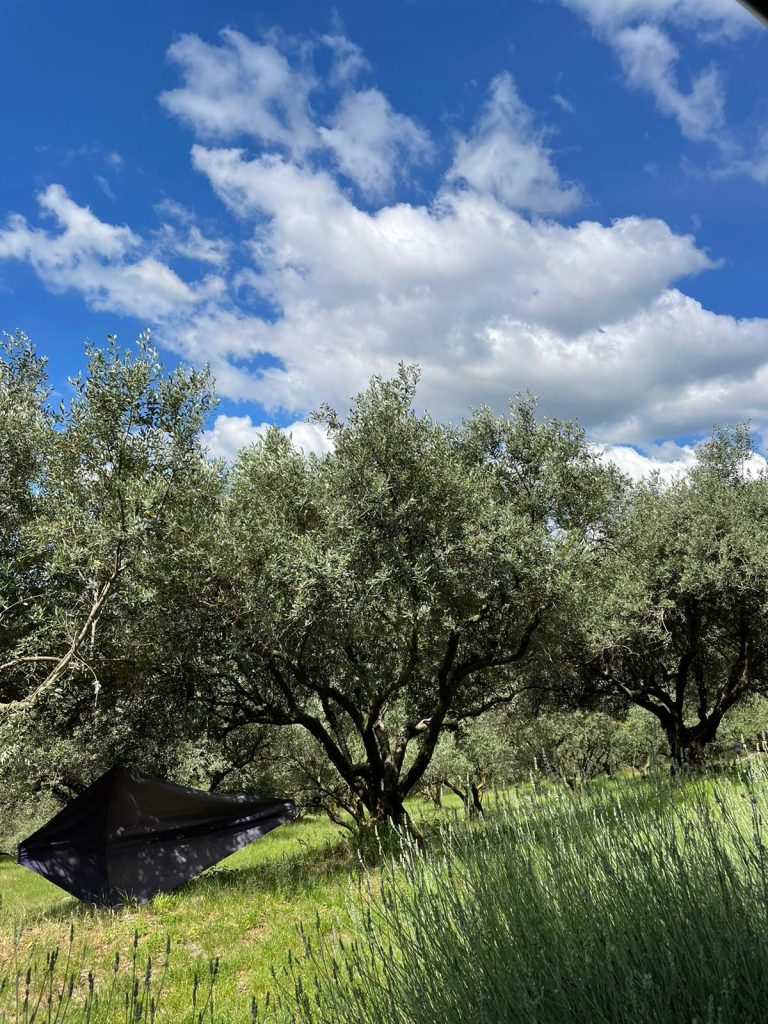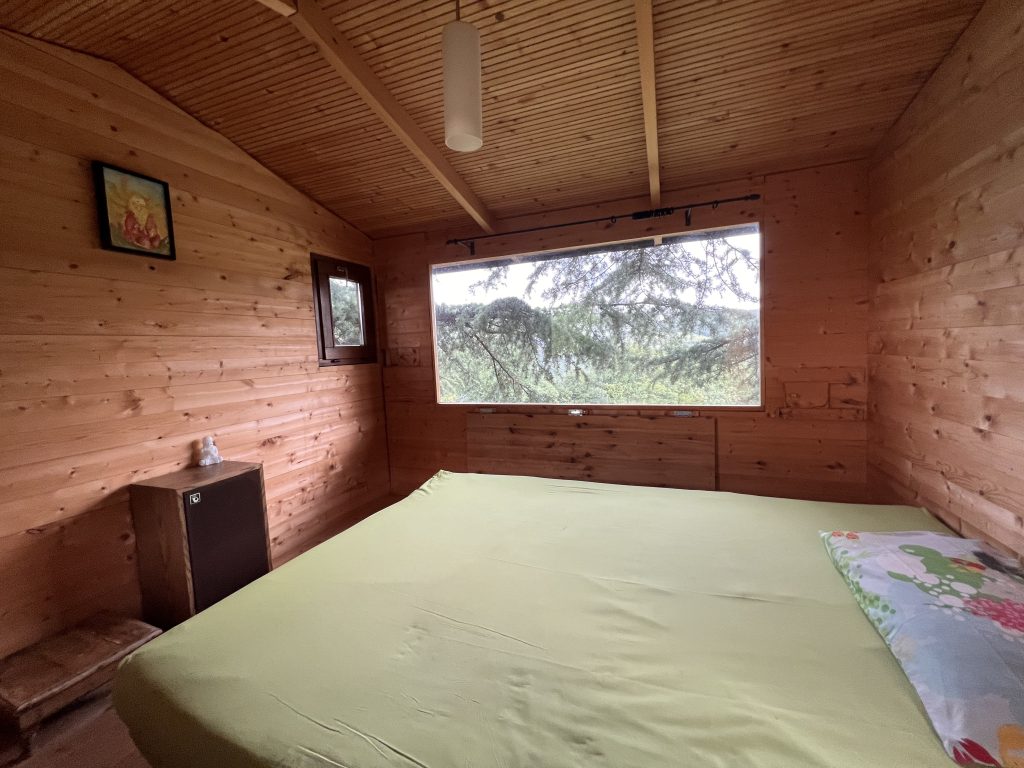Thursday 5 am – The sound of an ancient Tibetan gong wakes me up. I open my eyes and remember that I am in a wooden house on a tree and that for the following four days I will be attending an Anapana meditation retreat somewhere in the hills of the Verona province.

After the gong, time to brush my teeth, find a comfortable seat, close my eyes and focus my attention on the breath, specifically on the sensation felt when the air exits the nostrils and touches the skin right below the nose above the upper lip. You may think it’s easy. Don’t be fooled. Sitting still for an hour focusing on the breath alone and just the breath is very hard. You may also think that it’s a matter of exercise and that it will get better. In my case, it only got hotter. The more I meditated, the more I sweated.
Then why do it? Exactly. These were also my thoughts during the first day. I kept asking myself why the hell did I embark on this silent motionless torture.
There’s a personal answer that came in bits and pieces through the master’s words spoken during the daily lectures and through the enchanting taste of the food. Unbelievably tasty, colorful and fresh, and crisp and fulfilling. A loving caress to my skeptical soul. At every bite, my heart opened a little more. I stayed.
And there’s a more scientific answer to the importance of being able to focus. Harvard researchers found that the human mind wanders 47% of the time and that when you stray, you pay. When your mind wanders, you’re more stressed out and unhappy than when you stay in the here and now. The researchers found that people were happier—no matter what they were doing, even working overtime, vacuuming the house, or sitting in traffic—if they were focused on the activity instead of thinking about something else. A later University of Cincinnati study in 2021 supported the Harvard findings that mindfulness meditation—focusing your attention on the present moment—indeed abates mind wandering and keeps you on task. Regular mindfulness practices help us to automatically notice distracting thoughts like we might notice a blemish on the hand, set them aside, and refocus on the task at hand.
On day #2 I was ready to quit and get back home. Then I reminded myself that it was I who wanted it from the beginning. I might as well give it a chance and stay until the end. I took it as a “couple therapy” between me and myself. In fact, “me and I” have not agreed too often lately. The master’s words once again spoke a truth that resonated with me: “Concentrating on one single thing out of 10.000 (meaning the breath) and sticking to it through physical pain and mental hyperactivity, trains our ability to be more effective decision-makers and act out of intention instead of reaction.” I stayed.
“Concentrating on one single thing out of 10.000 (meaning the breath) and sticking to it through physical pain and mental hyperactivity, trains our ability to be more effective decision-makers and act out of intention instead of reaction.”
On day #3 after a few quiet meditations, I felt the positive vibration of success. That’s when I was gently confronted with another side of my cultivated personality. As soon as the endorphins of success lowered, I started to feel bored and restless. Again the world of food came to help. A thought arose about what happens to a cake when the impatient baker opens the oven before the time is right: the leaving stops and the cake is spoiled. I certainly did not want to spoil my very personal cake. This thought of the cake combined with the awareness around the fact that chronic premature leaving can lead to sustained superficiality motivated me. I stayed.
Between day #3 and day #4 I have spent a very painful night. My lower body was aching for too many hours sitting in the lotus position. I had no medicine to turn to and the night was young when the pain started. The pain continued all night until I heard the sound of dear old 5 am gong. Funny enough when sitting in meditation posture, there was no pain. In hindsight, I could have slept sitting. The amazing thing about this painful and sleepless night is that I had no mental hyperactivity. It hurt but it didn’t matter. I had no worries about being too tired the day after to meditate or drive home (a 4-hour drive). I was in pain and at the same time, I felt that everything would be ok.

On day #4 I was calmer but still impatient to discover some hidden truth within. The truth did not fail to present itself clearly and simply. It was there in front of my eyes for all of the 26 hours of meditation, hidden in the profile of my attention, in the quality of thoughts, and the physical sensations. A silent film with a clear plot.
Sitting in motionless silence for an hour, repeatedly during the same day for many days in a row, has brought me the gift of unprecedented intimacy with my consciousness. Each one of the 26 sessions unveiled a very personal lesson. It is not a journey I would recommend for the faint of heart. It takes courage to stand still and quiet until all the thoughts have been thought, and the pain has dissolved.
The phrase “Energy flows where attention goes” has never felt more true.
Interesting books on the subject of the mind:
- Peak Mind by Dr. Amish Jha
- Quiet Mind by John E. Coleman
- Stillness is the Key by Ryan Holiday
- Bird by Bird by Anne Lamott
- Thinking, Fast and Slow by Daniel Kahneman
- The Dip by Seth Godin
- The Healing Power of Meditation: Leading Experts on Buddhism, Psychology, and Medicine Explore the Health Benefits of Contemplative Practice by Andy Fraser and Daniel Goleman






